For the past three seasons, since Old Nick was built, we have had a 13″ x 9″ three blade propellor (left hand prop in image above). This was specified and tested by Vetus and, as we found during the Ortomarine Electric Narrowboat Trials Event, it performs pretty well in all areas. However, the engineer in me is always looking at ways to make improvements and, after talking to other Ortomarine owners that had changed their props, we started to think about a change.
Choosing the right prop for a boat is a black art and many engineers, far better than me, have spent sleepless nights studying the various theories and models that exist. I am not going to dig too deeply into the theory, but I do want to thank my friend and fellow Ortomarine owner Dave Jesse who ran his modelling software a number of times for me, giving me the confidence to make the change. Dave has his own blog where he covers his experiences with different props on NB Perseverance – well worth a read.
Usually when you size a propellor, you are trying to ensure that the engine is as efficient as possible across the whole of its working RPM range. The same is true with an Electric Motor and that is why Vetus recommended the smaller 13″ x 9″ three blade prop. If you go with a bigger prop, you create more torque at lower RPMs but at higher RPMs start to see the motor “torque limit” where you reach the maximum torque of the engine, but at a lower power consumption than the maximum power rating of the motor – for instance a 10KW motor may only reach 6-8KW.
What the traditional prop calculations do not take in to consideration, is that owners of electric narrowboats want silent cruising. If you are spinning a smaller prop at a faster RPM, you may get the full 10KW of power out of the motor, but once you get much above 800 RPM, the noise from the motor, a combination of mechanical noise and cavitation, seriously impacts on the “silent nature” of electric propulsion.
Cavitation is the disturbance of the water as it flows over the propellor, creating negative pressure on the blades, resulting in bubbles and noise. You could write a whole book on cavitation, so I will not try and cover it in this blog post. However, while I was researching this subject, I did come across this great diagram, which shows all of the variables that affect a propellor and cavitation (courtesy of the International Institute of Marine Surveyors).
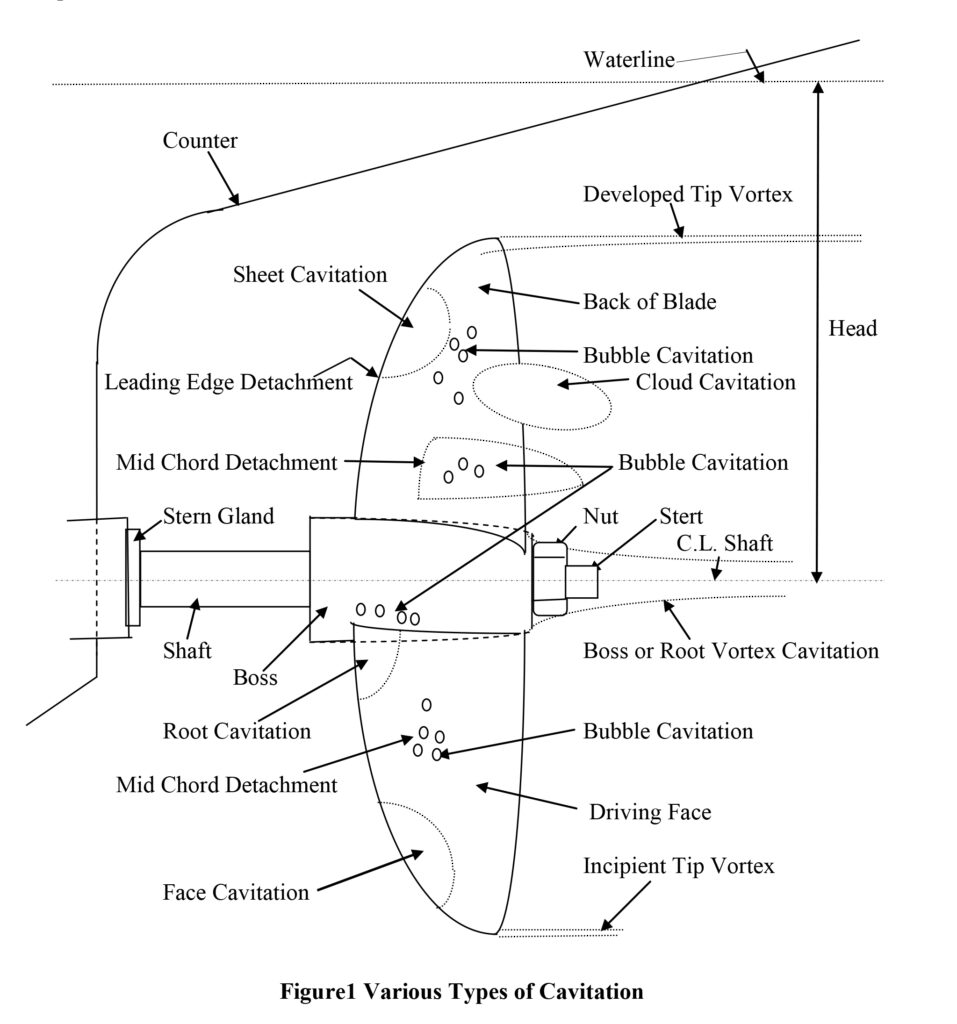
I won’t begin to try and understand what all of the different terms and variables are, but I think the diagram shows the complexity of the issues very well and if you want to know more, then an article by the IIMS, is available here.
So – we knew that we wanted to have a larger diameter prop, as this would give us more torque at lower RPMs and lower RPMs = less noise. However, there is a second equally important dimension related to marine props and that is the pitch.
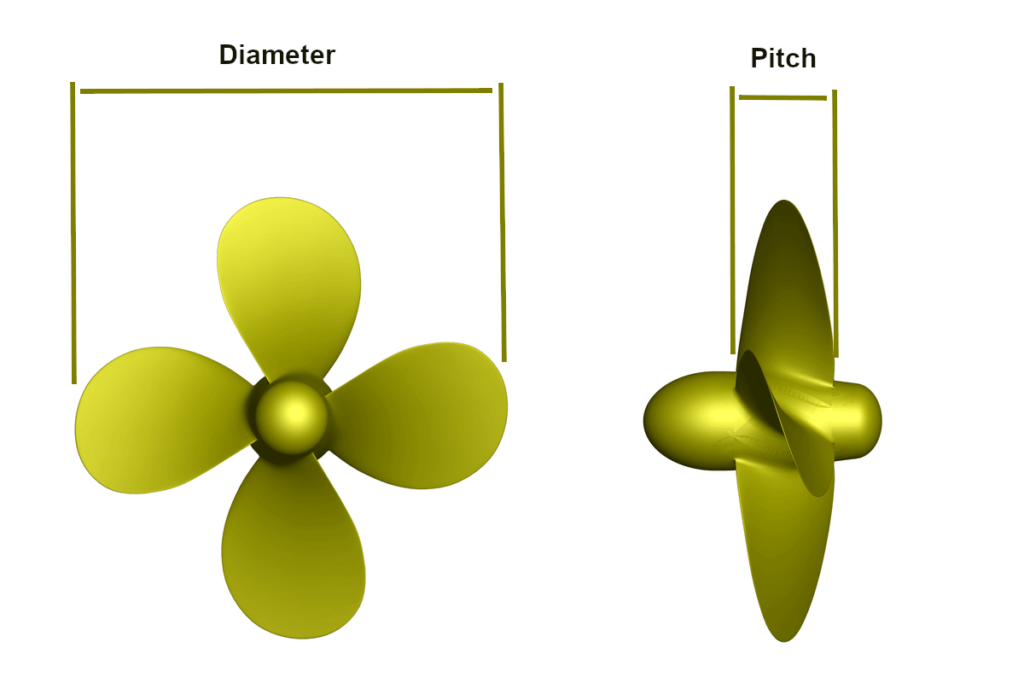
So the pitch of a propellor is defined as “the distance a propeller would move in one revolution if it were moving through a soft solid, like a screw through wood”. So for example, our original 13″ x 9″ prop would move 9″ forward in one revolution of the propellor. The shorter the pitch the less “push” you get and this has a big effect on the responsiveness of the boat to acceleration and braking (reversing of the prop). Many people refer to the effect of a larger pitch prop as “extra grip” and we have definitely seen that “Old Nick” will accelerate out of locks and stop more rapidly than before.
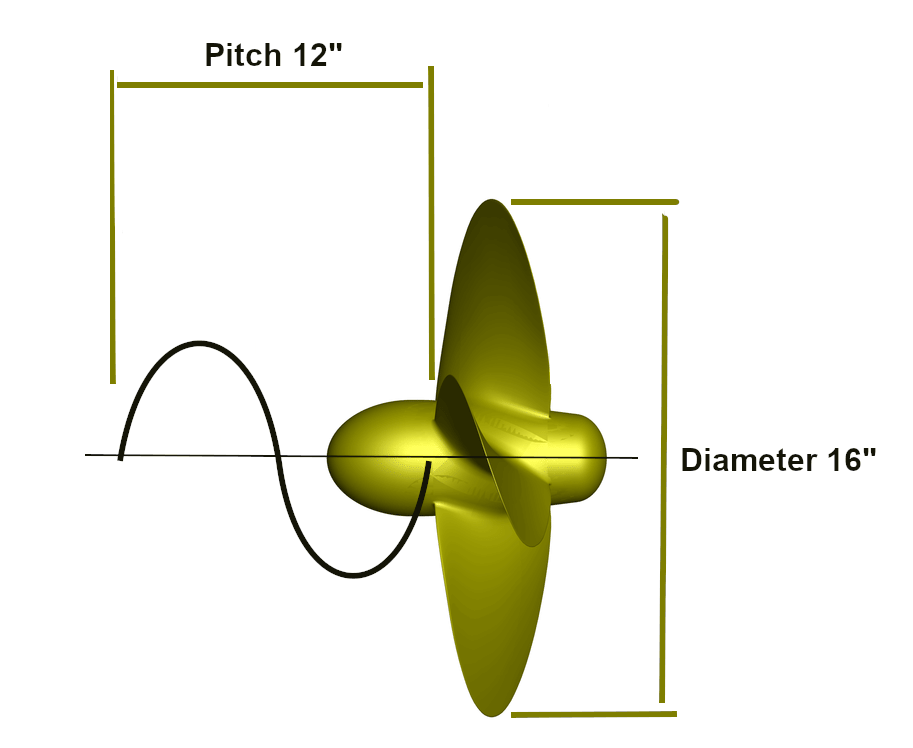
A propellor will never achieve the full forward motion of its pitch, as the less viscous (watery) the material the propellor is turning in, the more “slippage” that will occur – typically between 10% and 20%. The larger the pitch, the faster the boat will go but it will also affect the ‘torque limit” of the engine.
Making a relatively big change to the diameter of a prop and not making a similar adjustment in the pitch is generally considered a bad thing to do, as there is a ratio between pitch and diameter that should be maintained. Our original prop had a 13/9 = 1.45 ratio and after “losing our nerve” for going really large, like some electric narrowboats we had read about (20″ or more) we decided to go for a 16″ x 12″ four blade prop. This gave us a 1.333 ratio, so a slightly lower ratio than our original prop, but with the four blades giving us more blade area, this seemed like a good size for “Old Nick”
After checking with Vetus that the motor would electrically cope with the extra loads and running the 16″ x 12″ through Dave Jesse’s model, everything looked good. The model predicted a much slower RPM and a slight increase in speed (0.25 MPH) at our normal 30A cruising speed.
With the decision made, we ordered the new prop from Steve Wedgewood at Kings Lock Chandery – one of the largest and most experienced Vetus agents in the narrowboat market. Steve has been championing electric propulsion with the Vetus E-Line, since it was first launched and I always try to provide him with feedback on how we are getting on. In fact Steve has developed a belt drive reducer (gearbox) for the E-Line, to allow it to swing a larger prop without suffering torque limitation, which he launched at Electrika 2024. I was very tempted to fit one to “Old Nick” but because of our engine room layout, I would have lost too much space, making working in the engine room even more challenging. On a new boat install though, it would be perfect and I wish Steve every success with this interesting development.
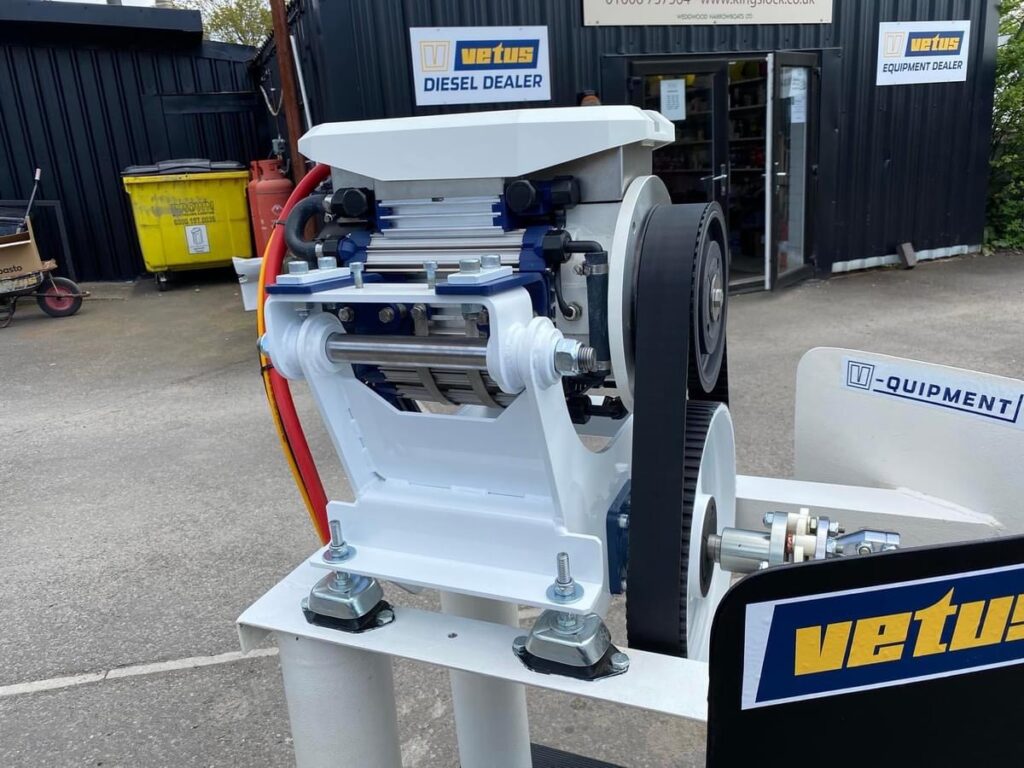
In order to fit the new prop, we had booked the use of a crane at Armada boat yard – 20 mins from Brinklow Marina. The team at Armada were great and despite horrible weather, made us all feel very welcome. Before we knew it, Old Nick was on the hard standing ready for Rob and Ian from Ortomarine to remove the 13 x 9 three blade and fit the new 16 x 12 four blade. The featured image at the top of this page shows the two propellors approximately to scale to give you a feel for the change in size.
It should be noted that the original 13″ x 9″ prop had a 25mm bore hole in its boss and needed a special machined 30mm to 25mm prop shaft from Vetus. Most larger props have a 30mm bore hole and to order a 16″ x 12″ 25mm bore prop, would have been a special order and added many weeks to the lead time. I took the decision to buy a standard 30mm diameter prop shaft and Ortomarine lifted the E-Line engine up and swapped the prop shafts before fitting the new prop.

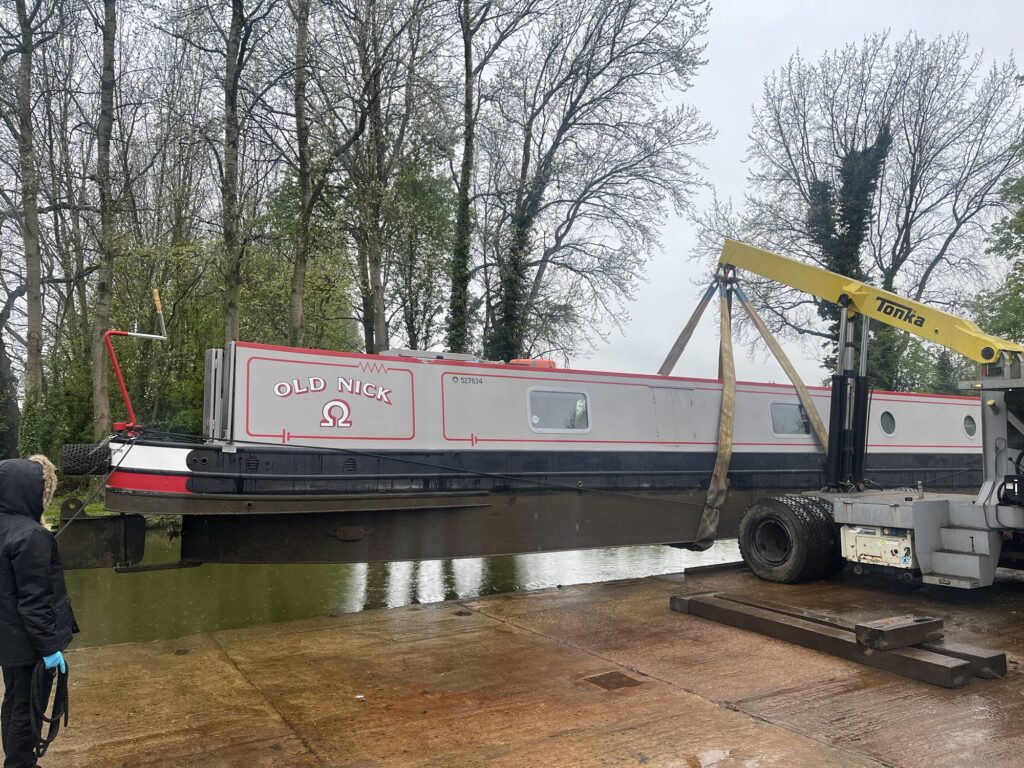


So, the $64,000 question….has the change been worth it? In terms of noise, at our normal cruising speed (30 Amps) and higher, undoubtably yes. Our RPMs have dropped by over 25% and now we do not start to notice the prop noise until we are hitting 60 Amps, which is about the fastest we would cruise at, under normal conditions.
Have we seen any improvements in speed? This is more difficult to confirm. In January when we went out for a New Year cruise, I took a series of RPM/Speed/Current readings on the North Oxford and had hoped to recreate these on the same stretch of canal with the new prop. What I had not allowed for, was that in January the water levels were extremely high – we awoke one morning to see parts of the tow path flooded. When we did the run with the new prop in May the levels were back to normal and I would say perhaps 9″ to 12″ down from January.
So the raw figures show no speed improvements, but my gut feel is that we are seeing maybe a 0.2 MPH improvement, but really difficult to prove this now, with limited readings of the 13 x 9 prop – very frustrating.
The other improvement we have seen, is in the responsiveness, particularly in locks. Our acceleration from stand still, braking and slow speed manoeuvring are all improved. This coupled with the much quieter operation, even at higher speeds, has made the switch worth while and we can accept the possible torque limiting of the motor – so far the fastest we have been with the new prop is 4.5 MPH – while testing the new prop. We rarely want or need this sort of speed on a canal.
I will continue to do further tests and when we are next on a river, open “Old Nick” up and see what our torque limit is. But for now we are happy with our new prop.

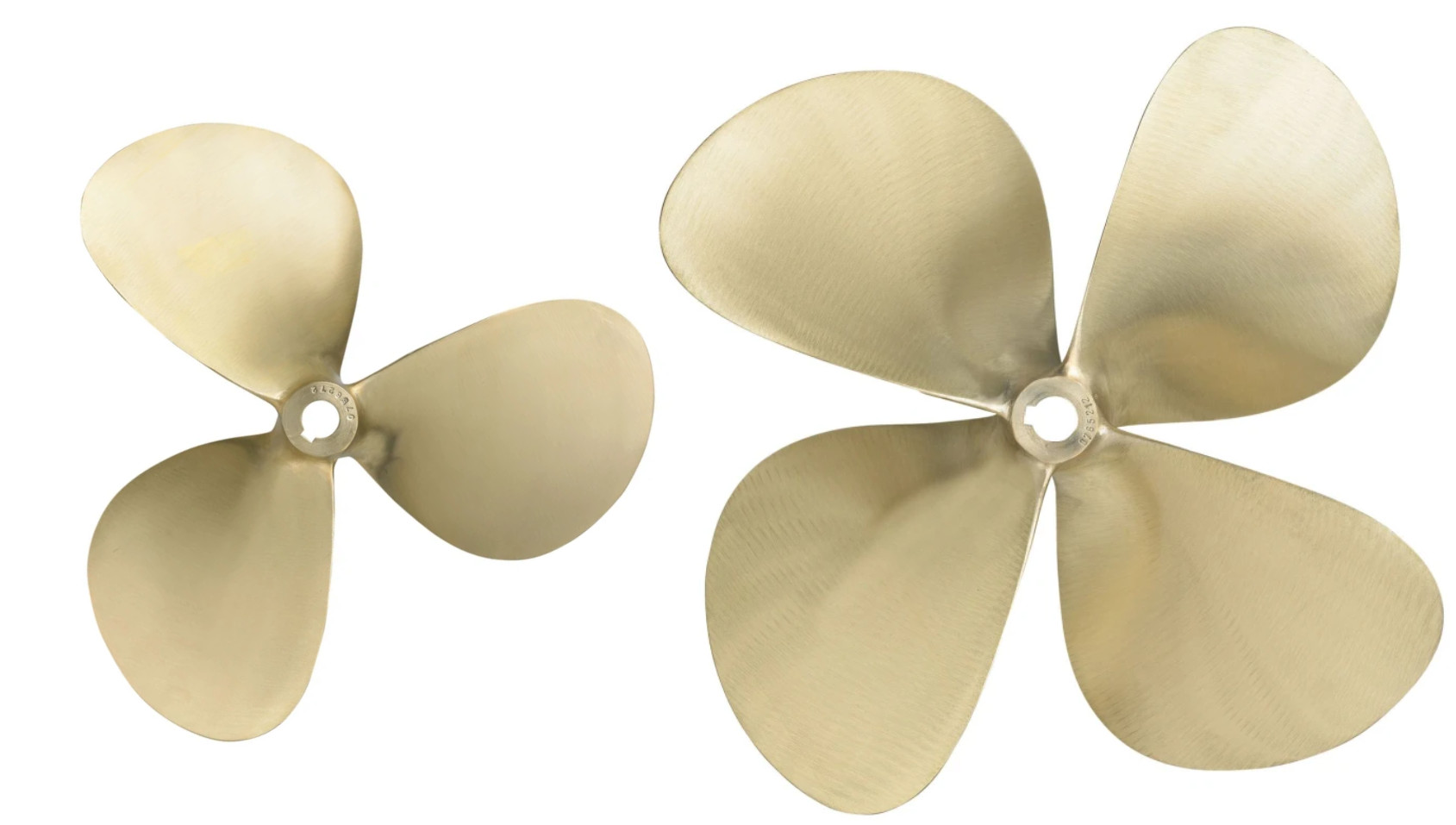
Terrific article Paul. Hope the change gives you what you need. Are you going to post it on the Electric Narrowboat site? (You may already have done so!). It would help create discussion and interest. We have an 18×12 3 bladed and the presentations at Elektrika gave me confidence that we weren’t far off the ideal. Time will tell. Thanks for all your info sharing.
Interestingly that’s exactly the same size prop I have (16″ x 12″ 4-blade) which I’ve been very happy with, but in my case (lower rpm higher torque motor) it’s also a good match for maximum power.
Thank you Paul.
After meeting you two the other day and discussing prop size I did wonder how your new prop was going. Also how you were going with the dreaded Nene Red flag!!
After discussions at the show with Trevor and Peter from Lynch and of course the Kings lock boys I am about to order a 17×12 4 blade so found this article very relavent.
Happy cruising on the Nene
Bluey
It was nice to met you and see Bluey. We have given up with the Nene and are now London bound. Good luck with your project.
Hi, Thanks for that fascinating article. You did such a good job making all that technical information understood by someone who is technically and mechanically ignorant. I came across you boat and blog from a Cruising the cut video on electric boats and I have been reading your blog since. My partner and I will retire in 2027 and plan to build a wide beam with either serial or parallel electric propulsion. We’re going with a wide beam because we will spent most of our time on the waterways of Europe and want a bigger boat. I’m torn about full electric or not. While we would like to go full electric, in reality we can’t because we will need a generator. Also, I’ve read/heard that for rivers and larger canals having a more robust engine is safer. I wonder if you would be so kind to entertain my question which is, for a parallel hybrid, will a larger propeller work as well or since the engine will have a diesel component, we will have to stick to the standard propeller used on diesel engines? Thanks, and happy cruising.
Hi Ardis,
Glad you like the blog and your plans sound exciting.
If you go with a parallel hybrid you will need to find a good compromise on prop size that works for the Diesel and Electric engines – should be possible to fit a large prop that gives acceptable performance with both engines.
Best regards
PAUL
Hi Paul just read your post on propellors really interesting as I have the same setup as yours Vetus 10kw motor and finding the same problem when in narrow water or a lock and very new to electric cruising [just nine months } how long do you think you will know this going to make a difference as I have spoken with Alex from kings lock and he said that they will fit one but he said that i will need a new propeller shaft as well did you have to change the shaft ?
Ps I did speak to you at Electra about solar panels and the show was very interesting and informative thanks for putting it on
Thanks again
Hi Raymond,
Sorry, I thought I had mentioned the change of shaft in the post, but I did not. Will add that now.
The 13″x9″ had a 25mm hole and Vetus supplied a special machined 30mm shaft that tapered down to 25mm. If I had stayed with the same shaft, it would have seriously increased the lead time on any larger prop and so I decided to change the prop to a standard 30mm one and order a prop with a 30mm hole. If I ever have to change the prop in the future, sourcing a 30mm prop will be much easier.
Best regards
PAUL